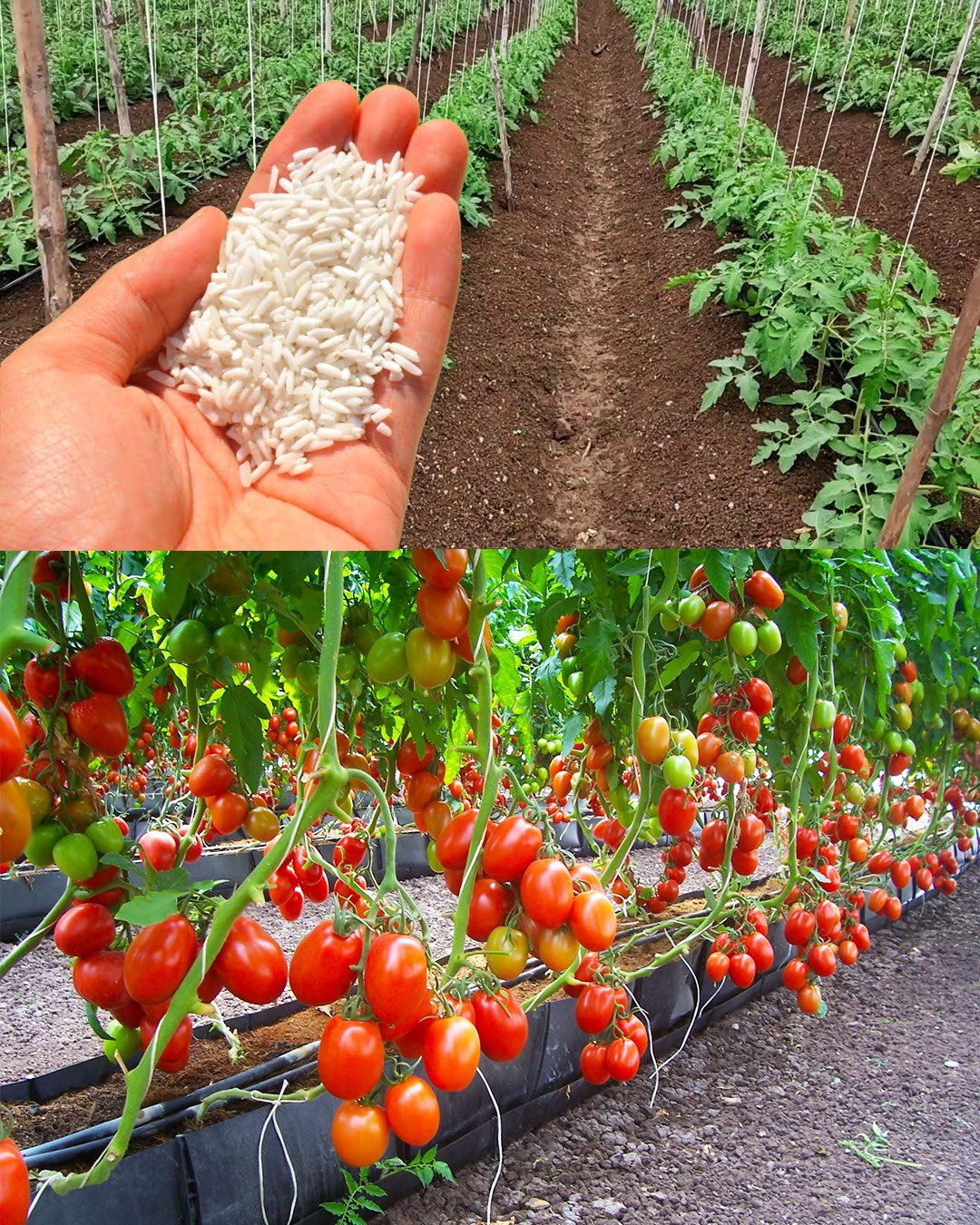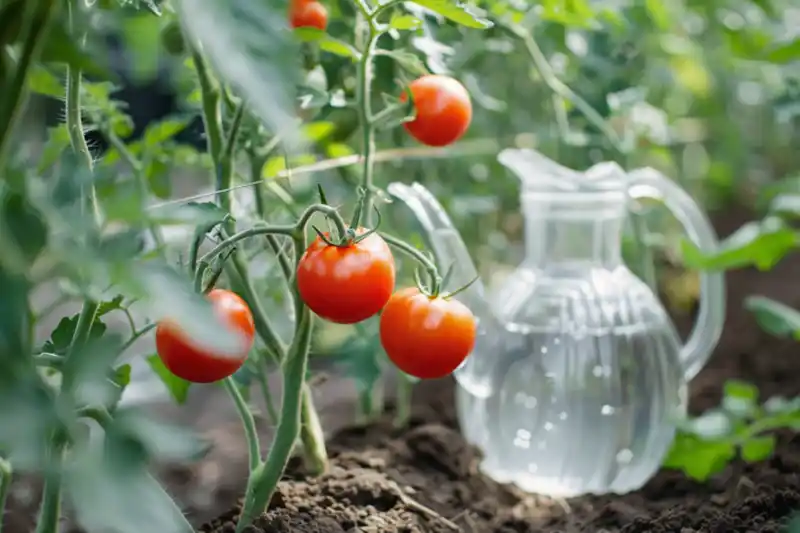Using rice water as a natural fertilizer for your tomato plants is a great way to sustainably nourish your garden. The nutrients found in rice water, like nitrogen, phosphorus, and potassium (NPK), as well as trace minerals like magnesium, zinc, and iron, contribute to plant growth and health. By applying rice water, you can enhance soil fertility, improve plant vitality, and promote more robust tomato production.
Here’s a more detailed breakdown of how to effectively use rice water on your tomato plants:
Benefits of Rice Water for Tomato Plants
- Essential Nutrients:
- Nitrogen (N) for lush green growth and healthy foliage.
- Phosphorus (P) to strengthen root systems.
- Potassium (K) for improved fruit quality and resilience to diseases.
- Trace minerals like magnesium, zinc, and iron also support overall plant health.
- Enhanced Soil Health:
- The starch in rice water acts as a food source for beneficial microbes in the soil, which help break down organic material into nutrients for plant absorption. A healthy microbiome promotes disease resistance and stronger, more resilient tomato plants.
Preparing Rice Water for Tomato Plants
You can prepare rice water using two simple methods:
Method 1: Soaking Rice
- Rinse the Rice: Use about half a cup of uncooked rice and rinse it with three cups of water.
- Soak the Rice: Let the rice sit in water for 30 minutes to an hour, stirring occasionally.
- Strain the Water: After soaking, strain the milky water into a container. This is your rice water, ready to be applied to your plants.
Method 2: Boiling Rice
- Boil the Rice: Add half a cup of rice to a pot of water, bring it to a boil, then simmer for 30-40 minutes.
- Cool and Strain: Once the rice is cooked, let the water cool, then strain it into a container.
- Use Immediately: For best results, apply the rice water on the same day, as it can spoil if left unused for too long.
How to Apply Rice Water
1. Direct Soil Application
- Pour the rice water directly around the base of your tomato plants. This allows the nutrients to reach the root zone for effective absorption.
2. Bottom Watering for Potted Tomatoes
- Place potted tomato plants in a tray filled with rice water and let the plants absorb the water through the drainage holes. This method encourages deeper root growth and helps avoid overwatering.
3. Foliar Spray
- Dilute the rice water with equal parts fresh water and spray it on the leaves. This provides an immediate nutrient boost and can help repel certain pests.
Tips for Optimal Use of Rice Water
- Avoid Overuse:
- Use rice water sparingly, ideally once a week, to avoid nutrient imbalances or potential root rot. Rice water should complement, not replace, your regular watering and fertilization routine.
- Storage:
- Store leftover rice water in a cool place and use it within a few days. Fermented rice water can be kept for up to two weeks but should be diluted to prevent harm to plants.
- Monitor Plant Health:
- Regularly observe your tomato plants for signs of nutrient deficiencies or over-fertilization. Adjust the frequency of rice water application according to how your plants respond.
By integrating rice water into your gardening practices, you’ll not only boost the health of your tomato plants but also promote a more sustainable and eco-friendly approach to gardening. This simple and cost-effective method can lead to vibrant, fruitful tomato plants, enriching both your garden and your harvest.

